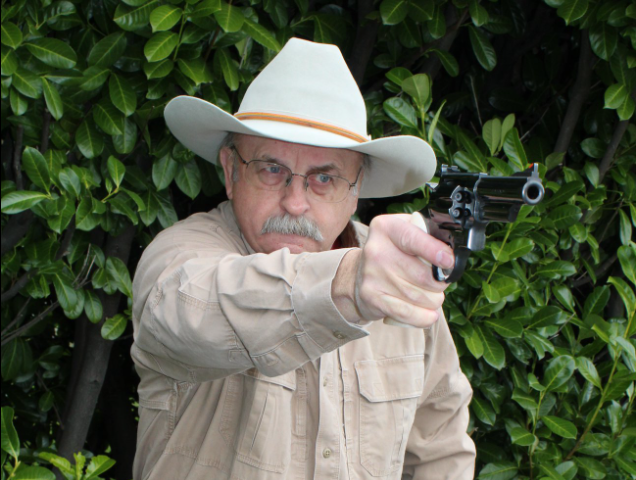
By Dave Workman
Editor-in-Chief
As a lifelong revolver fan, this correspondent has experienced many adventures and a few mis-adventures while packing a sixgun, or maybe a five-gun and early in life a nine-gun.
With some six decades of revolver shooting under my belt, two basic principles have become crystal clear:
- The Wheelgunner counts his shots
- The Wheelgunner makes his shots count
An experienced revolver user learns fast that “spray and pray” is no way to win a competition, put a rabbit, grouse or raccoon in the cooler, or survive a life-threatening emergency.
History has taught us that people skilled with round guns—from James Butler “Wild Bill” Hickok to Elmer Keith and champion competitor Jerry Miculek—learned to make every shot count. A look around Old West cemeteries might easily confirm that principle.
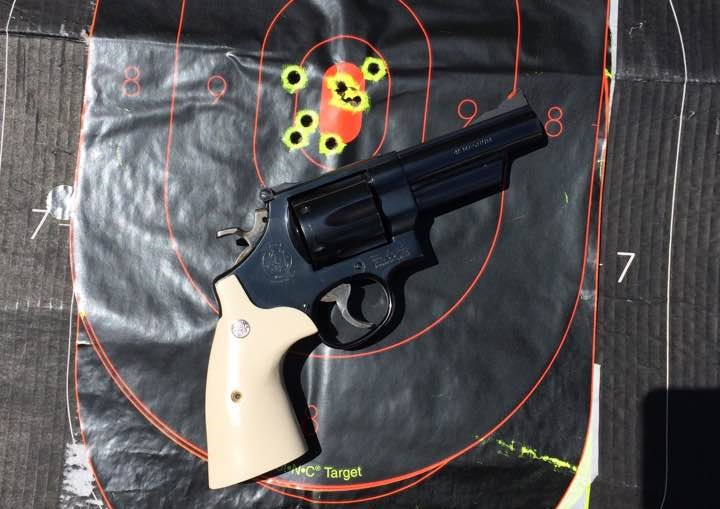
Whether single- or double-action, the revolver has one advantage over the semiautomatic pistol that the late Gen. George S. Patton noted: A semi-auto is actually a two-piece gun which requires a functional magazine in order to operate, while the revolver merely requires a supply of cartridges to remain in the fight.
I have carried revolvers on all kinds of hunting treks, and prior to discovering how much I liked about the Colt Commander .45, my daily carry gun was either a Model 36 Smith & Wesson in an ankle rig inside one of my cowboy boots or a 2 ½-inch Model 19 S&W in .357 Magnum, carried either in an old Bianchi Shadow “pancake-style” belt holster or a Safariland upside down shoulder rig, which hides pretty well under a hooded sweatshirt or large winter sweater.
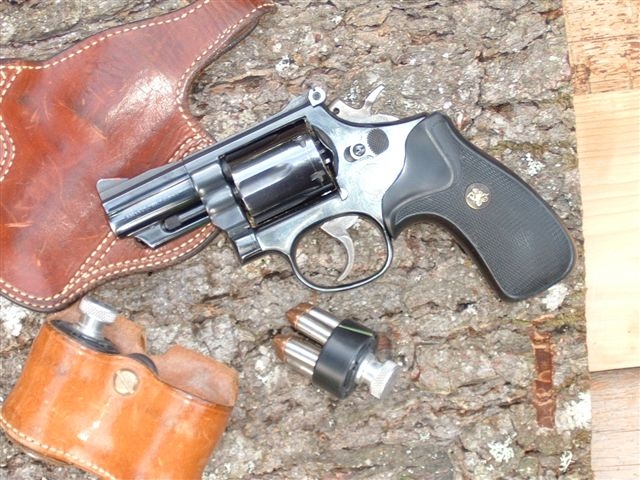
A couple of speedloaders in my pocked and maybe a six-round belt slide keeps a wheelgunner amply armed, and from experience, I can attest that speedloaders—my preference is for the HKS brand—can be remarkably fast when one knows how to use them.
While my magnum double-action revolvers normally ride on cartridge belts, I still keep one or two speedloaders in the pocket of my hunting vest or jacket. Hours of practice with speedloaders should result in one’s ability to dump empties and reload all chambers of a cylinder in a few seconds.
Out in the boonies, if something bad happens to a magazine, you’re still out of luck. So carry a spare, or maybe two.
But the bigger issue here is that shooting a revolver keeps one attentive to the number of shots that have been fired. And one devotes the time necessary to improving one’s marksmanship skills to make sure the minimum number of shots are fired for maximum effect.
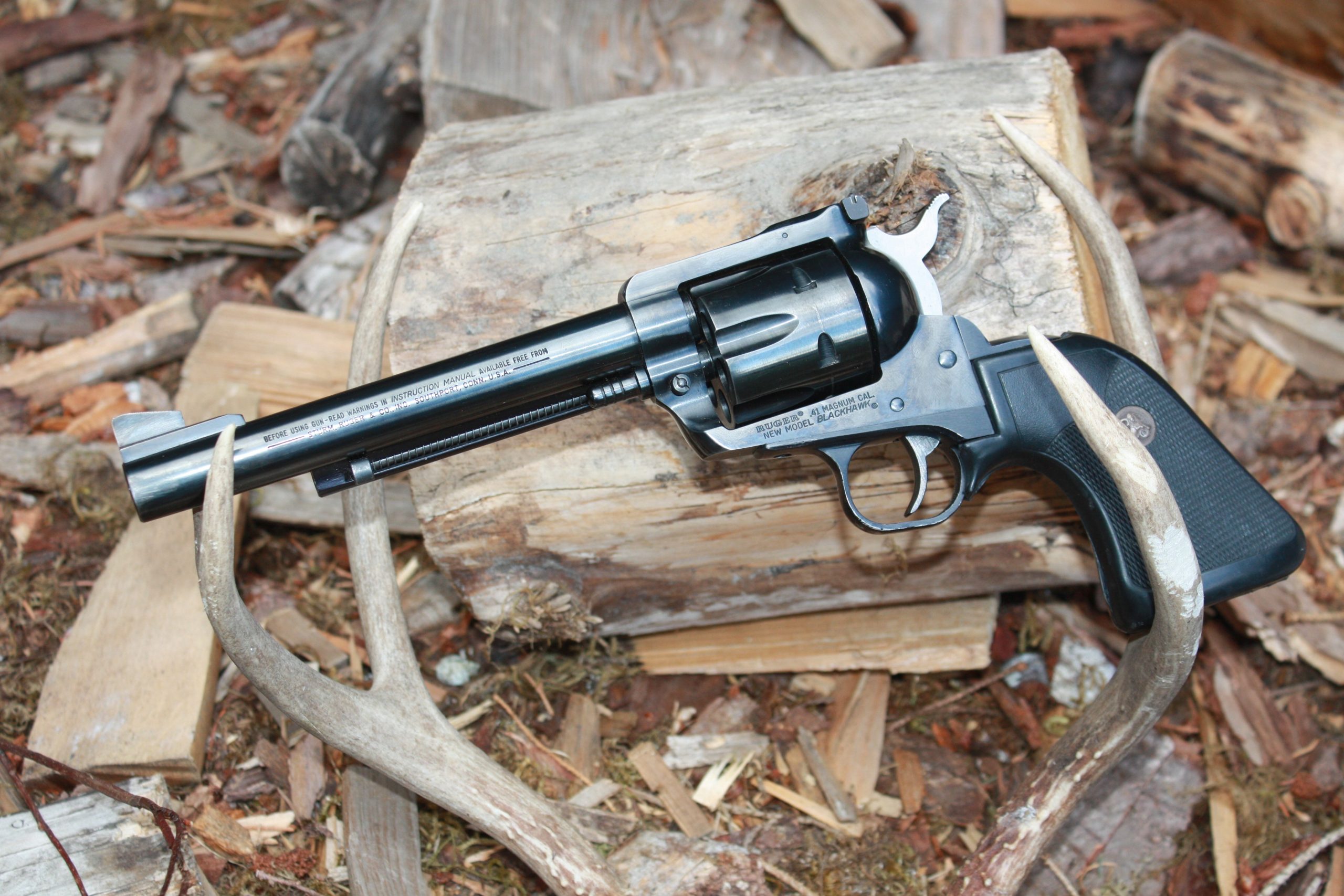
Where too many semi-auto shooters evidently subscribe to the rapid fire “spray and pray” philosophy, sixgunners do not entertain the idea of filling the air with lead. As Old West legend Wyatt Earp is credited with observing, “Fast is Fine, But Accuracy is Final.”
Another obvious advantage to the revolver over a semi-auto is the ability to save one’s brass. Where the autoloader flings empties all over the landscape, the revolver retains empty cartridges until the user consciously reloads. For the handloader, this is an important consideration, unless one has a steady supply of fresh Starline brass.
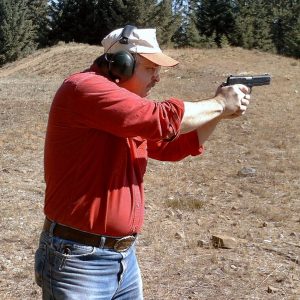
Having polished off three deer with revolvers, and spending time at the range to hone my skills over the years, the ability to recover spent brass (.41 Magnum, .45 Colt, .357 Magnum, .38 Special or .32 H&R Magnum) and reload it has been a money-saver. I’ve been able to find reliable load combinations with various propellants and good bullet weights and designs which deliver the goods while neither punishing my gun or my hand.
I realize that in today’s world, probably the majority of armed citizens carry semi-autos, especially for personal protection. But the person armed with a revolver is at no disadvantage when they can count and control their shots, and make each one count.
Today’s single- and double-action revolvers have continued to evolve, but there are some classic designs which have stood the test of time, which is why some of the older models can sometimes fetch high-dollar prices from discerning handgunners who know what they want. Colt has revived and improved on the Python and King Cobra designs, and yet one will find people searching gun shops and gun shows for vintage mid-20th Century N-frame S&W wheelguns because of their known quality and capabilities.
Even if it’s just a hard case of nostalgia, for those looking to try a round gun, there may be no better time than right now.



